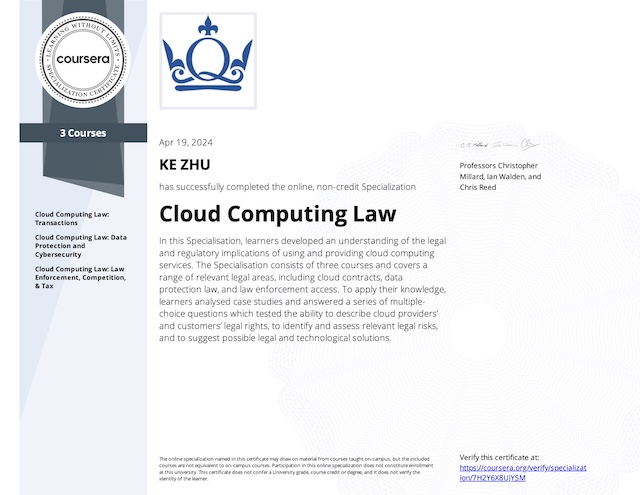Recall that the itemized deductions are also called “from AGI” deductions or below the line deductions. They are usually more personal in nature, including medical, taxes, interest and charitable, and not related to running a trade or business. It only provide a tax benefit to the extent, in total, they exceed the standard deduction amount. It is reported separately on Schedule A of the form 1040.
Medical Expenses
Deductible to the extent unreimbursed expenses, in total, exceed 7.5% of AGI. E.g. if AGI is $100,000, then first $7,500 of medical expenses would be non-deductible, but any amount in excess of $7,500 would be an itemized deduction.
Qualified expenditures include:
- Costs related to the diagnosis, cure, mitigation, treatment, or prevention of disease.
- Costs incurred to affect any structure or function of the body of the taxpayer, spouse or dependents.
- Prescription drugs and insulin.
- Necessary cosmetic surgery. (Necessary: relates to deformity arising from a congenital abnormality, injury, or disfiguring disease.)
Unqualified expenditures include:
- General health items, like vitamins.
- Nonprescription drugs like Aspirin.
- Unnecessary cosmetic surgery.
There are also some special cases:
- Nursing homes
- If primary reason is medical, costs of meals and lodging qualify.
- If primary reason is personal, only specific medical costs quality.
- Specialized schools
- Expenses deductible for mentally or physically disabled individual.
- Allowed if principal reason for attendance is the school’s special resources for alleviating infirmities.
- Cost of tuition, meals, and lodging are allowed as deductions.
- Capital expenditures (to one’s home to make it healthier)
- The expenses quality if they are deemed medically necessary by a physician, and use primarily by the patient.
- Cost and maintenance may also be deductible in sone cases.
- Deductible amount may be limited, only to the extent that exceeds any increase in the value of one’s home.
- Exception: removing any structural barriers to the home of a disabled person is deemed to add no value. Therefore the full cost of it would be eligible for the medical expenses deduction.
- Spouse / Dependent
- May deduct cost of medical care for spouse and dependents.
- Travel to receive medical care
- Deductible for transportation and lodging related to receiving medical care. Exception: meals en route is not deductible.
State and Local Tax (SALT)
A taxpayer can deduct as itemized deduction, The sum of all these deductions capped at $10,000 ($5,000 for MFS) for tax years 2018 – 2025:
- Either their state income taxes paid or their state sales taxes paid.
- Real property taxes paid to a state or local government.
- State and local personal property taxes.
Non-deductible taxes include:
- Federal income tax
- Employee’s share of payroll taxes
- Excise tax (cigarette taxes, gas taxes, etc)
- other types of fees.
Nonbusiness Interest Expense
Of course interest paid related to a trade or business is deductible as a “for-AGI” deduction. But, when it comes to nonbusiness interest expense, the ability to take a deduction is going to be much more limited. Generally non-business interest expenses are non-deductible but with some exceptions:
- Interest on qualified student loans
- For AGI deduction, maximum of $2500.
- If a taxpayer’s income is too high, their ability to deduct phases out.
- Investment interest paid
- Itemized deduction. limited to net investment income.
- E.g. loan proceeds used to purchase investment property (stock/land).
- Home mortgage interest
- Itemized deduction. Just the interest paid on the home is deductible.
- Home purchase on and before Dec 15, 2017: the total mortgage balance you can deduct interest on is capped at $1 million (sum of the mortgage balance on both your main and second home).
- Home purchase after Dec 15, 2017: the total mortgage balance you can deduct interest on is capped at $750K.
- The mortgage proceeds must have been used to acquire, construct or substantially improve the home.
Personal interest expenses that is non-deductible include:
- Mortgage interest over limits
- Credit cards
- Auto loans
Charitable Contributions
Charitable contributions made to a qualified domestic tax exempt organization are deductible as an itemized deduction. Qualified organization could be a government entity, most educational institutions, religious institutions, public charities. IRS maintains and publishes a list of these qualified organizations. If one receives tangible benefits, then fair market value of such benefit reduces deduction. Unfortunately, there is no deduction for contribution of services or value of time. But any expenses associated with volunteering is deductible.
Some contributions that are not deductible:
- Dues, fees, or bills paid to country clubs, lodges, fraternal orders, or similar groups.
- Cost of raffle, bingo, or lottery tickets purchased from a charity. (Although gambling loss is deductible).
- Cost of tuition.
- Value of blood given to a blood bank.
- Gifts to individuals
- Rental value of property used by a qualified charity
An ordinary income property is any property that would be taxed at ordinary tax rates if it were sold. For example: inventory or short term capital gain property. The amount of the deduction for ordinary income property is usually your basis of the property, which equals to “what you paid for the property” minus “any depreciation on that property you have deducted”.
However, if you contribute property that would generate a long term capital gain, then you can usually deduct the fair market value of the property as the amount of the contribution.
The limitation of charitable contribution deductions takes the form of an AGI ceiling:
| Deductions of cash, ordinary income property, certain capital gain property | ≤ 60% of AGI |
| Deduction for certain non-cash donations (like land) | ≤ 30% of AGI |
If a taxpayer cannot deduct all of their contributions in the current year, then these contributions can be carried forward and deducted for up to the next five years.
Retirement Plans
During the course of employment, individuals have opportunities to fund retirement plans and invest in Individual Retirement Accounts (IRAs). Broadly speaking, retirement plans can be classified into two groups:
- A defined benefit plan
- Based on predetermined formula: work years, average of last year’s salary, etc.
- Benefit is defined upon retirement.
- Like traditional pension plan where the employee receives a pension check from the former employer.
- Employer bears risk
- A defined contribution plan
- Benefits upon retirement are not defined
- Benefits are dependent on contributions that are put into the plan and how well the employee managed the retirement funds.
- Employee bears risk, manages contributions and investments.
- For example: 401(k) plans, IRAs
401(k) Plans
401(k) plans are defined contribution plans. The contribution limit is $19000 in 2019, and $19500 in 2020. Additional $6,000 “catch-up’ contribution can be added if person is age 50 or over. Employee contributions to a 401(k) plan are not includible in current gross income and are 100% vested. Employer contributions & all earnings in the plan are tax deferred. Employer matching do not count toward the limits.
What happens within 401(k) is that the individual can invest in a variety of funds: stock index, bond, or keep the money in cash.
Traditional (Deductible) IRAs
Contributions to a traditional IRA are deductible. Basically, taxpayer is making pre-tax contributions into IRA; both the contribution and earnings are tax-deferred until retirement. In this broad sense, the traditional IRA looks exactly the same as a 401(k).
However the limits are different than 401(k). In 2019 and 2020, the contribution limit is the smaller of
- $6000 (or $12000, for spousal IRAs), or
- 100% of the combined compensation of the individual and spouse.
- A working spouse can contribute to a non- or little-working spouse’s spousal IRA.
Taxpayer age 50 or over can make an additional $1000 contribution per person ($2000 for MFJ).
Essentially both types of plans provide for deductible contributions. If an employee is both investing in their 401(k) at work and also interested in investing in a deductible IRA, this would provide lots of tax benefits to the employee.
If taxpayer is an active participant in another qualified plan, such as 401(k), the IRA deduction limitation is phased out proportionately according to AGI (2019 values):
| Filing Status | Phase-out Begins at AGI of | Phase-out Ends at AGI of | range |
| Single / HH | $64000 | $74000 | $10000 |
| MFJ | $103000 | $123000 | $20000 |
| MFS | $0 | $10000 | $10000 |
In the case of MFJ, if one spouse is not an active participant while the other is, the taxpayer can still contribute up to $6000 to the non-active spouse’s deductible IRA, and the phase out of that deduction amount begins at $193000 and ends at $203000.
If a taxpayer is an active participant and falls…
| Above phase-out range | Not entitled |
| Within phase-out range | non-deductible amount =(AGI - Threshold) × contribution / rangewhere range = $10,000 if Single/HH/MFS, range = $20000 if MFJ. |
| Below phase-out range | Get the full $6000 deduction |
The non-deductible amount is calculated as follows:
- First the taxpayers sees how much higher is his/her AGI than the applicable threshold for the filing status.
- Then taxpayer divides that excess amount by the range of the phase out.
- Next multiply this promotion by the contribution limit.
Therefore the deductible amount is the greater of $200, or that year’s contribution limit ($6000) minus the non-deductible amount calculated above.
If the person is not an active participant in a qualified retirement plan, then the phase outs are not considered at all. The taxpayer can get the maximum allowable deduction regardless of AGI.
Non-deductible IRAs
Contributions to a non-deductible IRA can always be made. Here is no phase out issue, because contribution to a non-deductible IRA is non-deductible. The maximum contribution here is limited in the same way as for the traditional IRA.
Contributions are after-tax, but earnings are tax deferred until retirement. This tax deferral feature is particularly nice, especially when one considers what happens when an individual puts wages into a bank account instead:
| Put in bank account | Interest from a bank account is included in gross income, and being taxed every year – interest being compound at the after-tax rate of return. |
| Put in non-deductible IRA | Interest within the vehicle and it is not taxed until you withdraw the funds – interest being compound at the pre-tax rate of return. |
Taxpayer can elect to treat deductible IRA contributions as non-deductible.
Roth IRAs
The limits to contribution are the same as the deductible and non-deductible IRAs. Like the non-deductible IRA, contributions to the Roth IRA do not provide for any deductions, therefore the contributions are after-tax. The nice thing is the earnings are never taxed if the Roth IRA is held for at least 5 years and any of the following holds:
- Person’s age > 59.5.
- Distribution is made to beneficiary or estate, on or after participant’s death.
- The participant becomes disabled.
- Distribution for qualified first-time homebuyer expense (up to $10,000).
So the nice thing that Roth IRA offers is that although you are taxed on the front end of investment, on the backend, when you withdraw the investment, the whole thing is tax free. So in terms of tax planning, it would be wise to contribute to a Roth IRA when tax rates are low.
If an individual takes an unqualified distribution, meaning that the conditions above do not hold, then the distribution are first assumed to be taken out of contributions, which are a return on capital and thus they are tax free. Once contributions have been returned, the remaining distribution is assumed to come from earnings. You would be taxed at your ordinary income tax rate in the year of withdraw, plus a 10% penalty.
Roth IRA also has a phase out issue fro everyone (whether they have another retirement plan or not), but this is a phase out of the maximum annual contribution (2019), not the deduction.
| Filing Status | Phase-out Begins at AGI of | Phase-out Ends at AGI of | range |
| Single / HH | $122000 | $137000 | $15000 |
| MFJ | $193000 | $203000 | $10000 |
| MFS | $0 | $10000 | $10000 |
Amount that can NOT be contributed to Roth IRA is: (AGI - Threshold) × contribution / range, where range = $10,000 if MFS/MFS, range = $15000 if Single/HH. Therefore the amount that can be contributed is the maximum amount ($6000) minus the phase out amount just calculated.
IRA Basis and Rollovers
When you draw money from IRA, the income that is recognized:
income = withdraw - basis
withdraw = contributions + earningsThe basis of IRA is a key thing here that will determine how much of the withdraw is taxed.
| Traditional | Non-deductible | Roth | |
| Contribution | Pre-tax | After-tax | After-tax |
| Tax deduction | Deductible | Non-deductible | Non-deductible |
| Basis | 0 | Sum of contributions | Sum of contribution + earnings if various rules are met |
| Withdraw tax | Entire withdraw | Only earnings | Nothing |
IRA Rollover occurs when an individual withdraws funs from one type of IRA and convert it into another type of IRA. The “rollover rules” prevent savvy taxpayers from starting deductible IRAs and switching to Roth IRAs (basically never paying any taxes on any of the contributions or earnings). The basis considerations also affect “rollover rules”, that is “the amounted that gets taxed in a rollover = amount rolled over – basis”.
For example: rollover from traditional to Roth. The entire amount of rollover is included in gross income. Once the rollover occurs, the subsequent earnings will grow tax-free. Another example: rollover from non-deductible to Roth. Only the earnings are included in gross income.
IRAs may be “rolled over” tax-free into another IRA if it is the same (Roth to Roth, deductible to deductible, etc). If rollover has non-taxable or tax-deferred element, rollover must occur within 60 days for element to remain non-taxable or tax-deferred, otherwise IRS will team the distribution as a withdrawal, not a rollover.
The combined contribution limit for all IRAs together is set at some flat dollar amount $6000 ($12000 if MFJ), by IRS. It is not allowed to contribute this limit to each IRA in the same year, the taxpayer can split the limit across multiple IRAs in the same tax year.
In fact, perhaps due to the phase-out issues, some taxpayers might only be able to put in some portion of the limit into their traditional IRA, but this means that any remaining amount up to the annual limit, can be invested in any one or both of the remaining types of IRAs.
Contributions can be made any time before tax return due date (Apr 15).
Exceptions to Early Withdrawal Penalty
Distributions before the taxpayer turns 59.5 years old are early distributions and subject to a 10% additional tax (in addition to any normal tax that applies) unless an exception applies. Congress recognized that there are some life events where taxpayers should not be penalized for taking an early withdraw. Exceptions are:
- Total and permanent disability of the participant / IRA owner.
- Applies to IRAs? YES.
- Applies to Qualified Plans, i.e. 401(k), etc? YES.
- Employee separates from service during or after the year the employee reaches age 55 (or age 50 for certain public safety employees).
- Applies to IRAs? NO.
- Applies to Qualified Plans, i.e. 401(k), etc? YES.
- Payment of unreimbursed medical expenses that would have been allowable as an itemized deduction (in excess of AGI).
- Applies to IRAs? YES.
- Applies to Qualified Plans, i.e. 401(k), etc? YES.
- Health insurance premiums paid while unemployment
- Applies to IRAs? YES.
- Applies to Qualified Plans, i.e. 401(k), etc? NO.
- Qualified first-time home buyer, up to $10000.
- Applies to IRAs? YES.
- Applies to Qualified Plans, i.e. 401(k), etc? NO.
- Birth or adoption of a child, up to $5000.
- Applies to IRAs? YES.
- Applies to Qualified Plans, i.e. 401(k), etc? YES.
- Qualified higher education expenses
- Applies to IRAs? YES.
- Applies to Qualified Plans, i.e. 401(k), etc? NO.
and even more…
My Certificate
For more on Itemized Deductions and Retirement Plans, please refer to the wonderful course here https://www.coursera.org/learn/federal-taxation-individuals
Related Quick Recap
I am Kesler Zhu, thank you for visiting my website. Check out more course reviews at https://KZHU.ai



